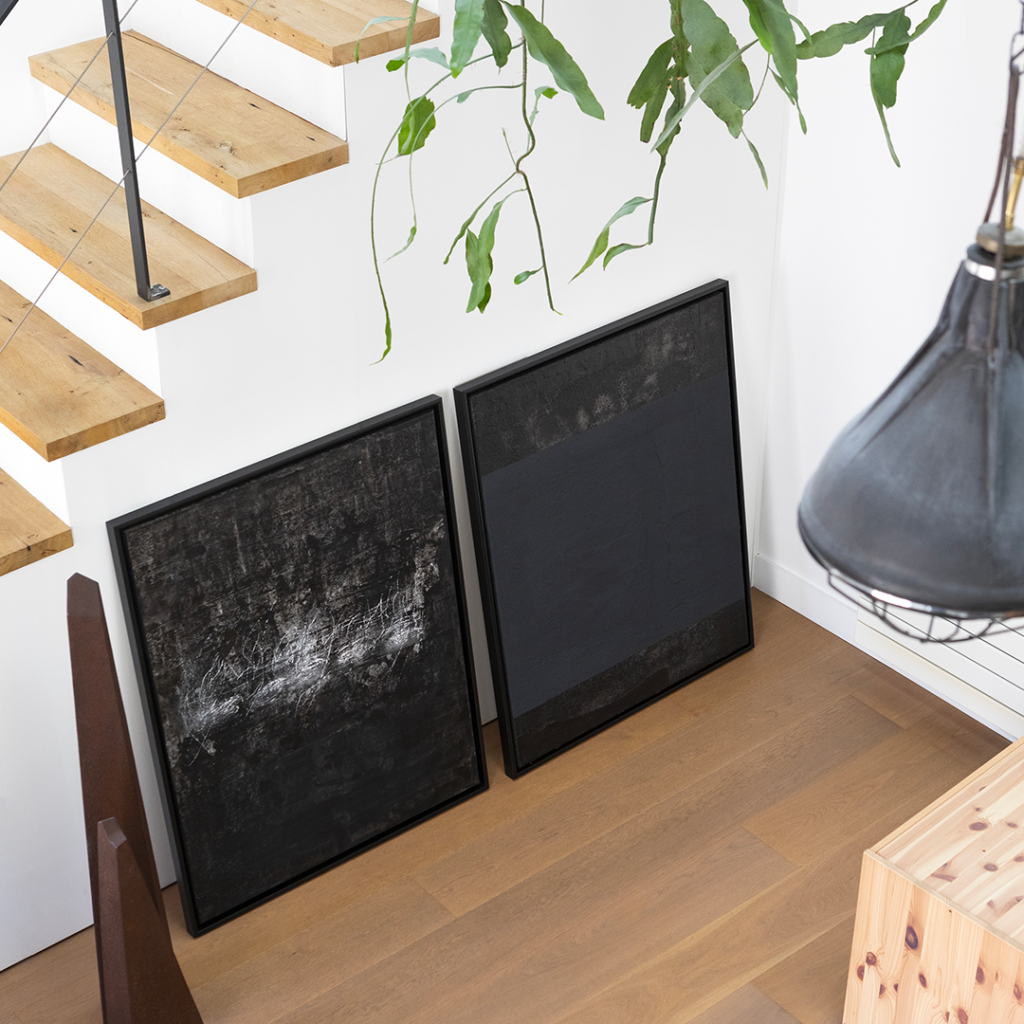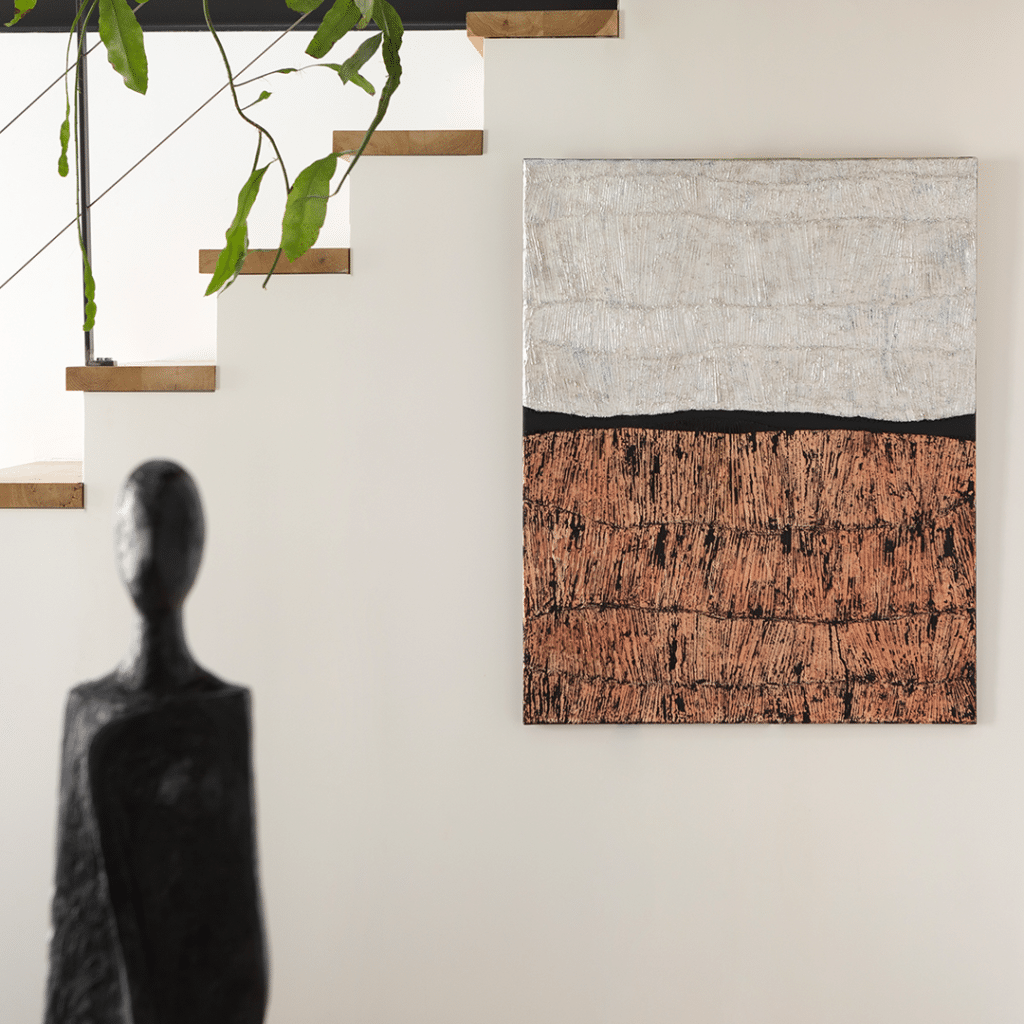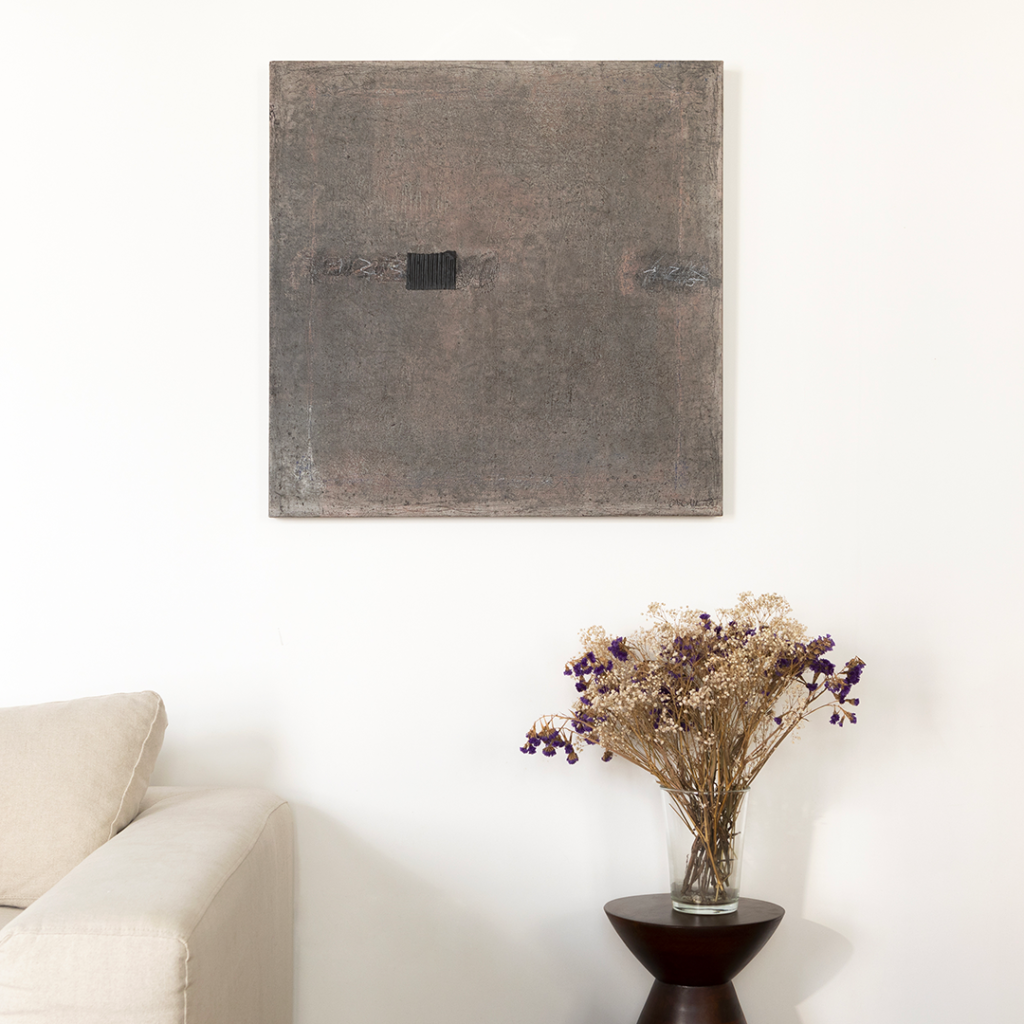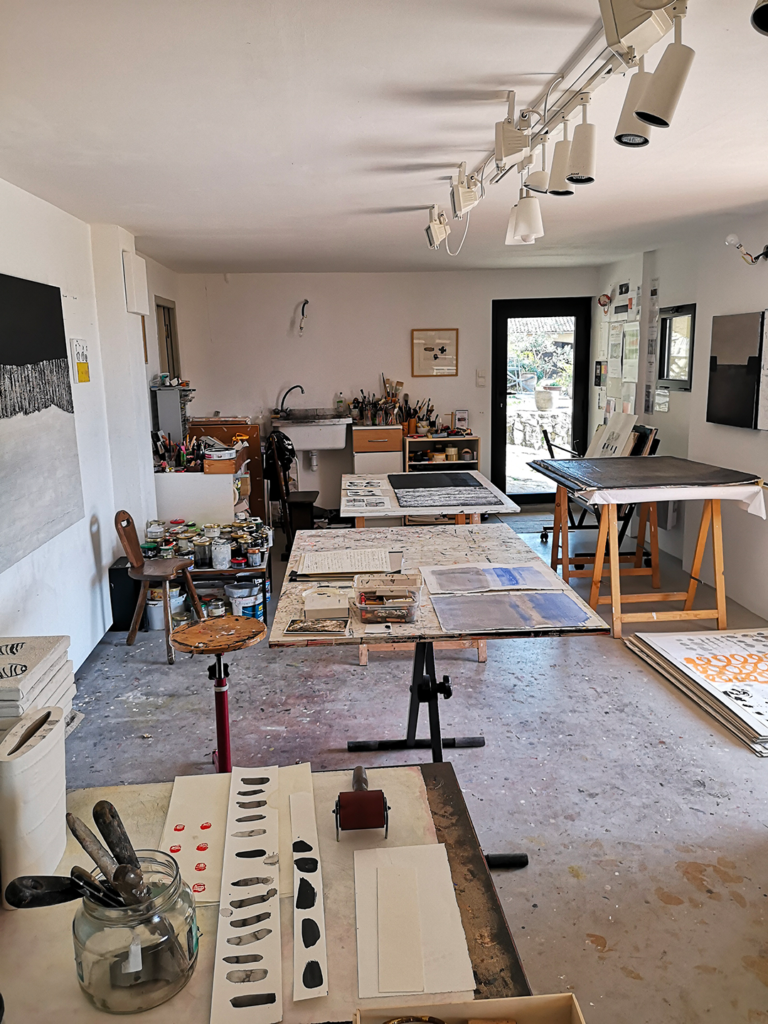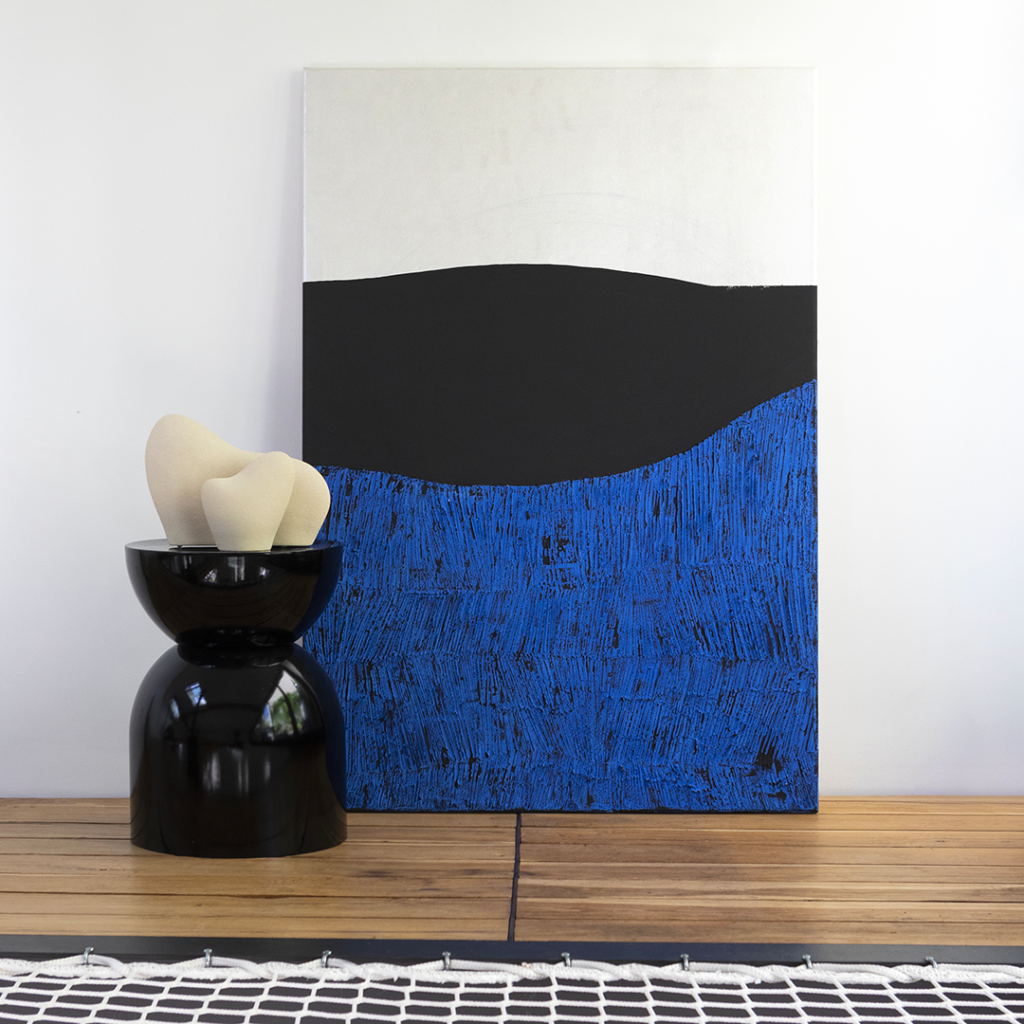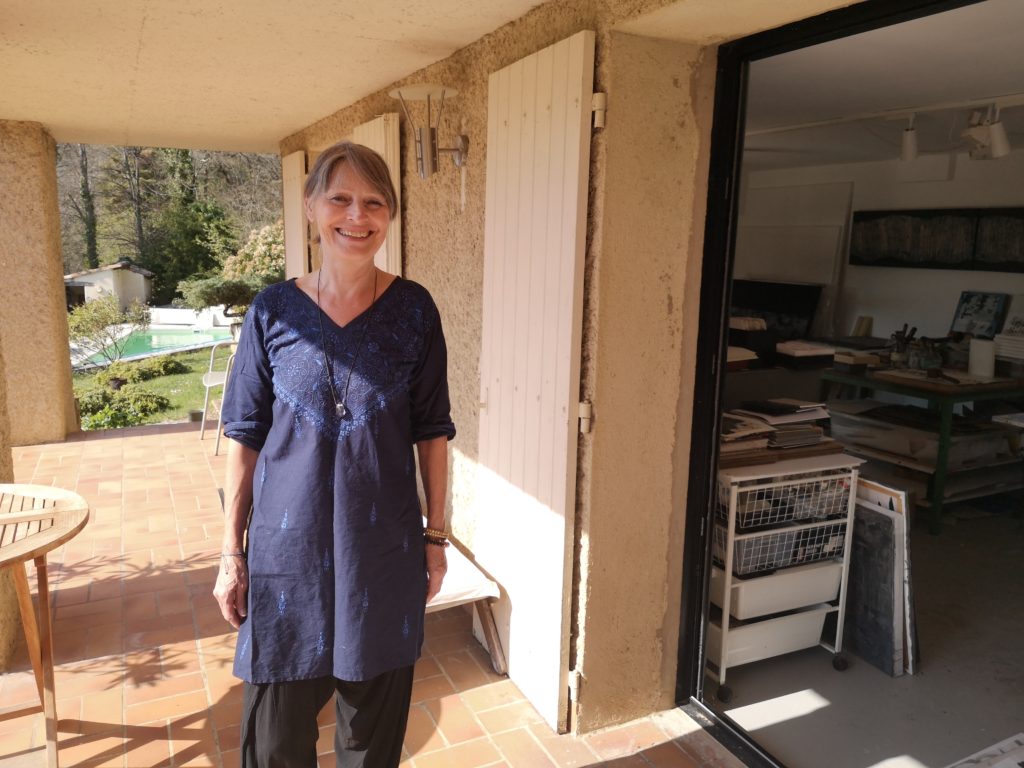
One of the gallery's leading artists, Catherine Cazau invites us to discover the enchanting world of her studio. Nestled in the heart of the Drôme, the land that gave birth to her and continues to nourish her artistic inspiration. Like the Drôme, her artistic work is imbued with two key words that guide her creativity: matter and color.
Hello Catherine, would you like to introduce yourself?
My name is Catherine Cazau, and I live and work in the Drôme, in Châteaudouble, a small village 450 m above Valence, with the hills in front of me. Drawing and painting were in my blood from an early age. I remember being nine years old, in class, drawing little girls' faces on my pink blotters, cartoon-style. My first exhibition took place at the age of thirteen in an empty room of the gendarmerie in Dieulefit, a Provencal village in the Drôme region where I lived for 4 years! My real solo exhibition took place in 1990, in Crest, Drôme, at the large and beautiful Galerie Espace Liberté. Since then, I've exhibited in Paris, Nice, Antibes, Valence, Switzerland, Sweden... For 32 years, I've been a part-time teacher and full-time artist! I trained at ENSBA, Valence's School of Fine Arts, in 1992 (the second year of the curriculum), and from 1990 to 2005 I continued teaching printmaking there.
How do you express yourself as an artist?
I express myself in two main ways. Through ENGRAVING, which was a revelation for me at the Beaux-Arts in 1990, the highlight of my career since this technique enables me to create prints, my passion! I also need to express myself through painting, by creating rather large canvases (preferably) and using materials (marble powder, sand, binders, acrylic paint, chalk...) that I often like to engrave! (Back to engraving!)
What do you seek to represent in yOur artworks?
I don't try to represent anything in my work. My work is abstract. Some will see physical spaces: bodies, sea, desert, mountains... but I need to see nothing. I want to let others into my sensitive space. My approach is close to poetry. Visitors can look at my work as if they were reading a poem by Baudelaire or Charles Juliet. To look at one of my canvases is just to be in the moment, to take an inner journey.
For me, painting is a spiritual quest, a search for the absolute.
"...Her work, alternately of burials and resurgences, reveals itself in a subtle palimpsest, all in filigree..." Claire Gilson
Duchamp said, "It's the viewer who makes the work "!
Can you describe your creative process?
I don't do any sketches before my creations. The work is built up slowly, as I go along. I often start with a background of material. I put my canvas on the ground, coat it with glue, then sprinkle it with sand or marble powder. I then engrave various signs. Once the work is dry, several coats of acrylic paint are applied, then washed off. I again etch writings, or snatches of writings, with greaseproof chalk... The words are written illegibly, then covered again with layers of paint. A long process, palimpsests. I continue until I achieve a balance that suits me.
My canvases thus become silent walls, where the material is scratched and incised, or talkative walls covered with multiple signs. As far as engraving is concerned, I don't practice academic engraving. I like to mix engraving, painting, signs and collages. I limit the number of print runs, choosing to create rather than reproduce. In this way, printmaking becomes an enchanting field of possibilities.
What are your sources of inspiration?
I'm interested in a variety of art forms, but my passion is abstract art. Many art movements have fascinated me: cubism, dadaism, expressionism, action painting, the informal movement, minimal art... And among the painters: Picasso, Miro, Klee, Tàpies, Hartung, Pollock, Fautrier, Dubuffet, De Kooning, Debré, Tal COAT, Schwitters, Soulages, Clavé, Twombly, Alechinsky... and many others!
Everyday traces also inspire me a lot! You can find them in the forest or in town, on trees, on walls, on the ground... It's pure poetry, it's all there!
